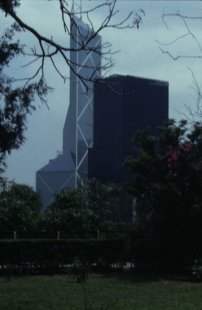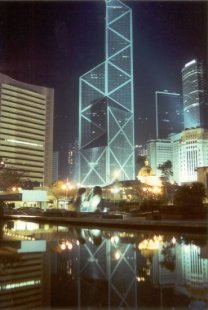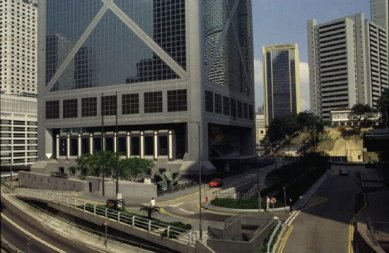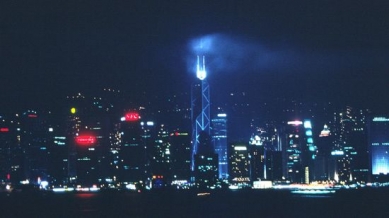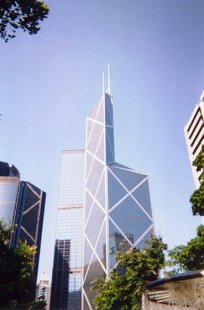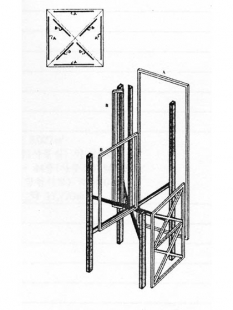
Bank of China

The idea of building a branch of the Bank of China in Hong Kong arose from Britain's decision in 1984 to hand over Hong Kong to China. The Chinese, eager for the return of the colony and for a clear visibility of their emerging global financial strength, approached the American architect of Chinese descent Ieoh Ming Pei. Ironically, Pei's father was a former manager of the Bank of China and a comrade of Chiang Kai-shek against the communist regime, which now tasked Pei's son with designing a branch of its central bank. Pei ultimately accepted the commission after consulting with his father, justifying it as "satisfying the desires of the Chinese people."
The Bank of China had to overcome immense geographical, political, and construction obstacles. The building is situated in the dense central district of Hong Kong on a steeply sloping site. The small plot (2 acres) was constrained by a web of highways and ramps. During World War II, the site housed the headquarters of the Japanese army, which tortured thousands of prisoners here. The structural requirements stem from the building's location in a typhoon zone - wind stress is double that of New York, and in terms of earthquake protection, it is as stringent as in Los Angeles.
Like many of Pei's buildings, the Bank of China also evokes controversial reactions. Unlike local geomancers, bank officials do not share enthusiasm for the final appearance of the building. The diagonal bracing frames remind them of their names being crossed off the employees' list. Feng shui experts, however, have embedded a series of remedies into the building to enhance the organization's success. For example, the building's structural framework was completed on August 8, 1988, which was according to feng shui experts the most auspicious date of the past century.
The triangular module of the building extends into the composition of the surrounding Chinese garden on the bank's ground floor, utilizing natural materials, water features, and traditional Chinese plants. The hallmark of Chinese gardens is the contrast between the flowing dynamics of complexity and simplicity, activity and rest. At the base of the Bank of China, you can fully enjoy these feelings.
Today, the Bank of China operates in the heart of Hong Kong as a gigantic zen talisman. The most striking architectural element - the glass and aluminum facade reveals the sophisticated load-bearing structural system of this unique 70-story skyscraper.
The Bank of China had to overcome immense geographical, political, and construction obstacles. The building is situated in the dense central district of Hong Kong on a steeply sloping site. The small plot (2 acres) was constrained by a web of highways and ramps. During World War II, the site housed the headquarters of the Japanese army, which tortured thousands of prisoners here. The structural requirements stem from the building's location in a typhoon zone - wind stress is double that of New York, and in terms of earthquake protection, it is as stringent as in Los Angeles.
Like many of Pei's buildings, the Bank of China also evokes controversial reactions. Unlike local geomancers, bank officials do not share enthusiasm for the final appearance of the building. The diagonal bracing frames remind them of their names being crossed off the employees' list. Feng shui experts, however, have embedded a series of remedies into the building to enhance the organization's success. For example, the building's structural framework was completed on August 8, 1988, which was according to feng shui experts the most auspicious date of the past century.
The triangular module of the building extends into the composition of the surrounding Chinese garden on the bank's ground floor, utilizing natural materials, water features, and traditional Chinese plants. The hallmark of Chinese gardens is the contrast between the flowing dynamics of complexity and simplicity, activity and rest. At the base of the Bank of China, you can fully enjoy these feelings.
Today, the Bank of China operates in the heart of Hong Kong as a gigantic zen talisman. The most striking architectural element - the glass and aluminum facade reveals the sophisticated load-bearing structural system of this unique 70-story skyscraper.
The English translation is powered by AI tool. Switch to Czech to view the original text source.
0 comments
add comment


